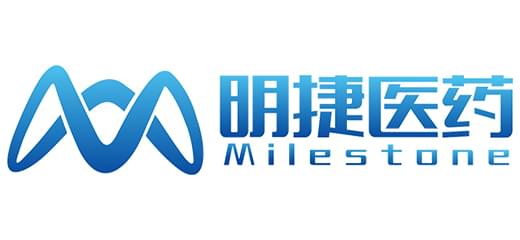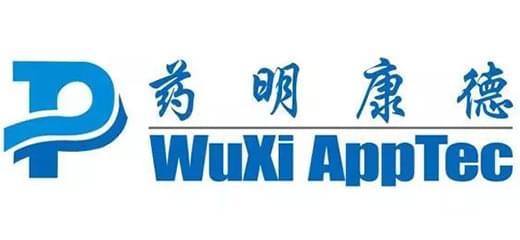

Prabhakar has joined USP in January of 2020 and he is currently the Director of Pharmaceutical Sciences, General Chapters, and works with Microbiology, Dosage Forms and Packaging & Distribution Expert Committee related activities. He is also the scientific lead for the Complex Generics initiatives at USP, including developing standards for Extractables & Leachables, as well as other complex products such as Complex Injectables, Ophthalmics, Topical & Transdermal, Nasal & Inhalation products.
Prior to joining USP, Prabhakar worked in the pharmaceutical industry for more than 27 years at various small and large pharmaceutical companies in the field of analytical and bio-analytical chemistry. His expertise includes analytical and bioanalytical method development and validations, use of modern analytical technologies such as HPLC/UPLC and LC-MS/MS for characterization of both small and large molecules, use of automated instrumentation (TPW, and Sotax AT MD) for assay and dissolution testing, ICH stability testing, and preparation of regulatory documentation for IND/ANDA/NDA submissions.
Prabhakar has BS and MS degrees in chemistry and PhD degree in bioanalytical chemistry.


Jiang Yan, the Director of Packaging Materials and Pharmaceutical Excipients Testing and Research Department at Sichuan Institute for Drug Control. A visiting scholar at the University of Massachusetts College of Pharmacy and Health Sciences (MCPHS), a CNAS assessor, and an authorized signatory in the field of pharmaceutical packaging materials. With 20 years of experience in the testing and quality research of pharmaceutical excipients and packaging materials, I have led over a hundred research projects related to compatibility for drug and packaging material and containers, integrity test for container closure system. I have been involved in drafting the standard methods for the guidance of rubber closures, plastics, metals for the Chinese Pharmacopoeia. I have won one second-class prize for technological progress from Sichuan Province, hold six national invention patents, and have published more than 20 professional papers.


Cheney has over 10 years of CRO business experience and over 8 years of Extractables and Leachables study expertise.
Cheney has Master's degree in biopharmaceuticals, and he is one of the drafters of the technical part of the China CDE’s Extractables and Leachables study gudiance "Technical Guidelines for the Study of the Compatibility of Chemical drugs and Elastomer Seals (Trial)" and has promoted the process of domestic research on the extractables and leachables study of in-process components. He has over 10 years of experience in third-party testing services and 8 years of packaging material E&L regulations and testing experience. He’s familiar with domestic and foreign drug-related laws, regulations and technical standards, master a variety of analytical technical equipment and testing methods; familiar with cGMP good practices, and help domestic companies submit files to regulatory authorities. In terms of E&L study of pharmaceutical packaging materials, he has handled over 1,500 projects, and has accumulated a wealth of extract and extract research skills.


Wenjing Zhao is a biological technical manager in Fresenius Medical Care and has the responsibility for biocompatibility and chemical characterization of medical device, as well as the compatibility of drug-packaging materials. She worked in Medtronic as senior scientist in charge of medical devices of Chemical Characterization and Materials of Concern for 7 years. Wenjing graduated from Soochow University and had been engaged in the research and development of Pharmaceutical Chemistry and Medical Device for over 12 years. She is good at Medical Device Chemical Characterization, Materials of Concern, and Polymer science.


Jia Min, Boo is the Technology Manager for Asia Pacific from West Pharmaceutical Services. She is based in the Singapore office. She joined West as a Technical Account Specialist in Technical Customer Services (TCS) and later progressed to the role of Senior Technical Account Specialist. In her TCS role, she provides technical support to pharmaceutical companies in the AP region through product recommendations, technical trainings and consultations to ensure smooth and easy uptake of West’s wide product portfolio for customers' drug product applications. As Technology Manager, in addition to providing TCS support to customers in Australia, she works closely with relevant stakeholders to develop in-depth knowledge of industry and technology. By understanding the technical regulatory requirements, she transforms these into scientific insights for customers and the industry. Additionally, she is also managing the AP Technical Services Lab, which mainly supports West internal projects. Jia Min holds a Bachelor degree in Material Science Engineering from Nanyang Technological University in Singapore.


Dongdi Sun is the director of chemistry lab which mainly provides customized chemistry testing services, including chemical characterization of medical devices materials, drug packaging materials compatibility study, target compounds method development & validation and testing. Dongdi Sun obtained Ph.D. in chemistry from Mississippi State University in the United States. He has 11 years’ research experience in analytical chemistry including 5 years of research experience in chemical characterization of medical devices and drug packaging material compatibility study. In 2019, he won the honorary titles of "doctor of entrepreneurship and innovation of Jiangsu Province" and "high level talents of science and technology innovation and entrepreneurship of Soochow".


Dr. Dujuan Lu serves as the manager for the extractables and leachables (E&L) team at the SGS Fairfield New Jersey facility as well as the global leader amongst the three centers of excellence for E&L testing. Before joining SGS, she worked at Fresenius Kabi as a research scientist, leading E&L projects to support transfusion and infusion medical device and parenteral products. She has extensive CRO and pharmaceutical/medical device industry experience with more than 500 E&L projects on a broad range of packaging systems, including process materials, pharmaceutical finished packaging, and medical devices. As a subject matter expert in the E&L field, she is frequently presenting at various conferences as invited speakers and technical session chairs. She was named one of the top 60 most influential people working in the pharmaceutical industry in the Medicine Maker’s 2020 power list.
Dr. Lu obtained her PhD in analytical chemistry from the University of Pittsburgh and BS in chemistry from Nanjing University. She has authored more than 15 high-impart journal publications with more than 300 citations. She is serving as an expert reviewer for more than 10 prestigious journals in the field of analytical chemistry and pharmaceutical science.


Marine LEPOUTRE currently holds the position of Global Subject Matter Expert in Extractable & Leachable at GSK Vaccines and is responsible for aligning all GSK Vaccines sites with current regulatory requirements. Before this position, in her role of process expert for Belgium site, she leads process validation as homogeneity, holding time, lifetime and lyophilisation. Marine is a Chemical Process Engineer with a master’s degree in Chemistry from CPE Lyon in France.


Anders Burild, specialist in the toxicological department at Novo Nordisk is responsible for the strategy for safety assessment of Extractables and Leachables (E&L) from container closure systems and production equipment. Furthermore, Anders is involved in the evaluation of impurities according to ICH M7 and ICH Q3, biological evaluation of medical devices and combination products according to ISO10993 as well as assessment of excipients.
Anders is member of the ELSIE board of directors, the Safety Information Working Group and the sensitization subteam. Further, Anders is also a part of the EFPIA ICH Q3E support group supporting the ICH Q3E EWG with science driven PDE’s for establishment of a general qualification limit for leachables.
Before joining Novo Nordisk in 2018, Anders worked as a toxicologist at the Danish Environmental Protection Agency in the field of pesticides. Anders has also done research in bioactive compounds at the National Food Institute, Technical University of Denmark from where he obtained his PhD-degree in analytical chemistry and bioscience.


Dr. Leshuai Zhang obtained his PhD from North Carolina State University in 2010, where he studied skin toxicology. After graduation, Dr. Zhang joined the Center for Drug Evaluation and Research, US FDA as a Research Fellow where he received drug reviewer training for drug evaluation and investigated the mechanisms of drug induced toxicity. In 2012, Dr. Zhang joined Nanotechnology Innovation Center in Kansas State University as a research assistant professor, focusing on hepatotoxicity of food additives and nanomaterials. Since 2014, he joined Soochow University as a professor, currently working on nano-immunotherapy and hepatotoxicity evaluation of nanomaterials using 3D liver models. He has published over 40 SCI papers in toxicology, pharmacology and nanomedicine area with more than 1500 citations. He holds internationally certified/registered toxicologist including DABT, ERT, UKRT and DCST.


William Bello is an analytical pharmacist within the Pharmacy Department of the Lausanne University Hospital (Switzerland). He is a quality control specialist as well as an analytical developer of validated analytical methods for stability studies of future compounded drug products in accordance with Pharmacopeial and ICH standards. During his PhD, he has become an expert in the Extractables and Leachables (E&L) field in hospital pharmacy. He has installed an analytical screening system for plastic additives in hospital pharmacy-compounded drug products. He also set up a multi-purpose database named DELTA (Database for Extractable and Leachable Trace Assessment) used for the identification, semi-quantitation and toxicology assessment of these compounds. He holds a B.Sc., M.Sc. in Pharmaceutical Sciences as well as a Ph.D. specialising in hospital pharmacy E&L.


Daniel Canton joined Sartorius Stedim Biotech in Göttingen; Germany in 2021 as Manager of the Confidence® Validation Services E&L laboratory. Daniel holds a degree in biotechnology with a strong focus on analytical and (bio)organic chemistry. Before he joined Sartorius, he worked in the primary packaging industry for more than 10 years: Four years thereof as Study Director for E&L and over six years as Laboratory Manager for E&L. In total, he gained more than 14 years of E&L experience and worked on more than 1000 E&L projects for CCS, SUS, and medical devices. Before Daniel decided to focus his career on E&L, Daniel worked for different pharmaceutical and chemical companies such as Merck, BASF, Roche, and Bio-Rad Diagnostics.


Dr. Manojkumar Varada is a seasoned Extractables and Leachables (E&L) and Analytical Team Leader with over 10 years of experience in the pharmaceutical industry, specializing in E&L assessments, analytical method development, and mass spectrometry-based research. He holds a Ph.D. in Organic Chemistry from the National Chemical Laboratory, Pune, where he built a strong foundation in advanced analytical techniques.
Dr. Varada joined Pfizer in 2016 and currently leads a team focused on E&L studies, nitrosamine risk assessments, ICH Q3D elemental impurity evaluations, and analytical method validation for parenteral and combination products. Dr. Varada has played a key role in establishing advanced E&L laboratories, developing streamlined LC-HRMS workflows for unknown identification, and implementing regulatory-compliant strategies aligned with PQRI, USP <1663>, <1664>, <665>, <1665>, and ISO 10993 Parts 1, 12, and 18.
He has also represented his organization in FDA meetings, contributing to regulatory responses and scientific discussions.